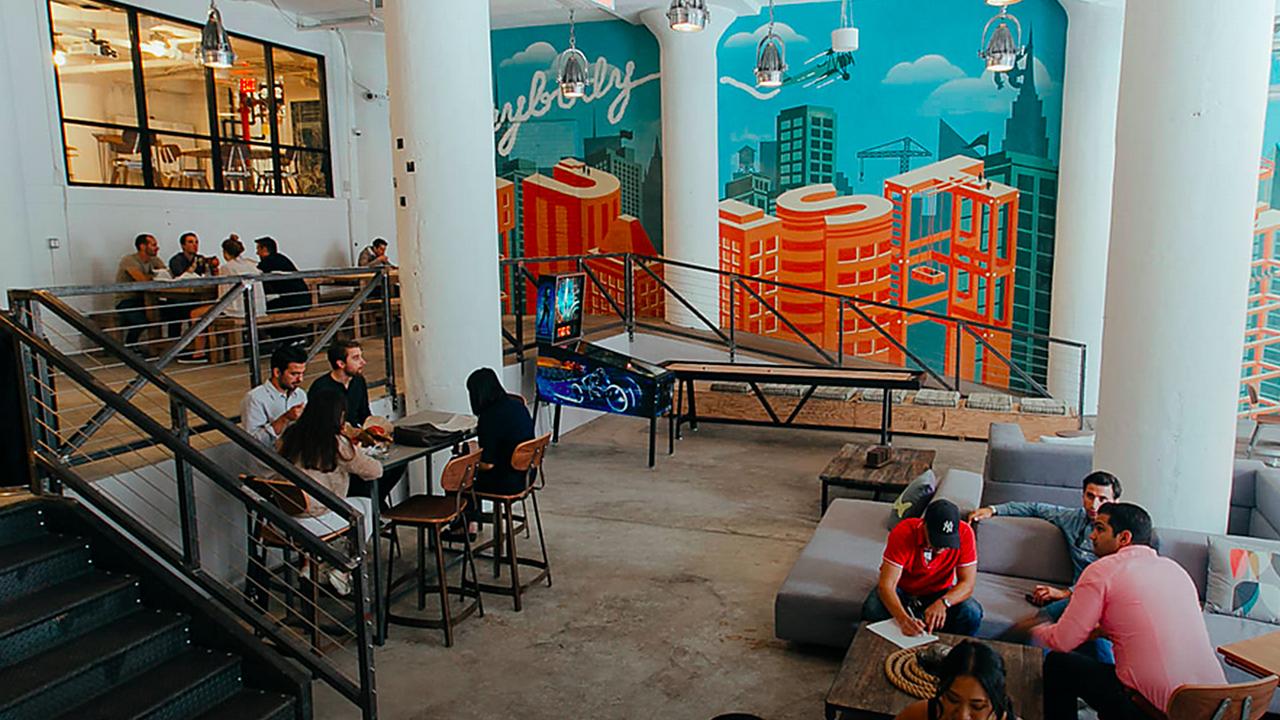Sole trader’s rise adds string to workforce’s bow
Some say it is exports like iron ore and coal and gas and education that underpin Australian prosperity. I think differently.

Some say it is exports like iron ore and coal and gas and education that underpin Australian prosperity. I think differently.
It’s not a commodity or a service that makes us rich, it is the remarkable adaptability of the Australian workforce. And perhaps this is just as well because, with the rise of the gig economy, there will be greater need for even more adaptability in the future.
In December the workforce was measured by the Australian Bureau of Statistics at 12.7 million workers, up from 10.8 million a decade earlier. The economy adds roughly 200,000 net extra jobs every year and it has done this through boom and bust over 10 years.
Over the past 40 years the workforce has doubled. But this is not the only thing that has profoundly changed. The female workforce has tripled, from two million to six million since 1978.
And the number of part-time jobs has quadrupled from roughly one million back then to roughly four million today. These are compelling figures for the property industry for two reasons.
First, these proportional shifts cannot be maintained into the future. Our base is higher and there are no secret reserves of another under-utilised gender just waiting to be emancipated and drawn into the workforce. When you think about it, the movement of women into the workforce was a productivity stroke of genius.
Second, the injection of women into the workforce delivered net extra spending capacity like a blowtorch into pretty much every Australian household.
Over the long term, houses leapt in value because the fundamental repayment capacity of the household increased. And homes were reconfigured so that the family pivoted around the kitchen, rather than the kitchen being quite separate from the living space in the loungeroom.
Both outcomes transformed the property industry and prompt questions about the future of social change as it relates to the workforce.
There are questions at the moment about the rise of the so-called gig economy, which includes independent contract workers like, say, Uber drivers, as well as those letting out rooms on Airbnb or doing jobs on Airtasker or delivering food as Deliveroo drivers.
Is this the future for the Australian workforce? The ABS Labour Force Survey does ask questions about various forms of employment, and gig-economy workers are included in the monthly estimates of the workforce even if they aren’t separately identified.
But there are other sources that can help tease out the rise of the gig economy. Over the decade to 2018, the workforce increased by 18 per cent, which was the same as the rate of population growth.
Independent contractors such as those employed in the gig economy generally require an ABN (Australian Business Number) for taxation (and engagement) purposes. They are, in effect, sole traders.
The Australian Bureau of Statistics tracks the rise, and fall, of business enterprises with data ultimately sourced from the ATO and the Australian Business Register (ABR).
At June 2017, for example, there were 2.2 million business enterprises operating within the economy. One of these enterprises is BHP. Another is Commonwealth Bank. Yet another would be a milk bar (assuming they still exist) in, say, Gundagai.
The vast majority of business, however, is comprised of 1.37 million enterprises that operate as sole traders and which includes one-man-band (and one-woman-band) lawyers and accountants and farmers. The common denominator is that they don’t employ workers, since they are sole traders.
Sole traders make up 11 per cent of the Australian workforce. Gig economy workers are largely mixed up with, and swim around within, the nation’s big broad base of sole traders. Did you know that Australia’s sole trader population increased by 51,000 in net terms over the 12 months to June 2017? And that in the previous year the jump was 34,000, and that in the year before that the jump was 11,000? The sole trader jump is getting bigger every year.
A decade earlier, in the 12 months to June 2008, the sole-trader population increased by just 1000 in net terms.
You know, home office supplies is probably a good business to be in at the moment. And to be fair, a decade ago the economy was contracting in response to the then looming global financial crisis.
The ABS dataset that measures change in the number of businesses, including sole traders, also presents data by industry. Over the four years to June 2017 (the period following the peak of the mining boom), sole-trader numbers increased by 8 per cent, or 106,000, in net terms. Most new sole traders in this period included activities such as general medical practitioner (a sole trader GP), up 5000 to 23,000, and real estate services, up 3000 to 25,000. But there was another curious category of surging sole traders springing out of the post-mining boom gates.
In the category of “other transport support services” (meaning not a taxi), the jump in sole-trader numbers over the four years to June 2017 was 12,000, or 45 per cent, to a new base of 39,000. This compares with 24,000 sole-trader taxi drivers at that time.
There is, of course, a greater pool of taxi drivers overall working as employees for larger businesses, but in the sole-trader category non-taxi drivers — and these are most likely Uber drivers — it is evident that contract workers from the gig economy have finally surfaced in the figures.
The meteoric rise of the non-taxi driving sole trader applies to the year ending June 2017, which was up 27 per cent as compared with growth for all sole traders in that year of just 4 per cent.
Interestingly, the categories of sole traders that contracted most over the four years to 2017 were activities like dairy farming, down 16 per cent, and grape growing, down 15 per cent. It is possible sole traders in these categories expanded, employed workers, and moved into the small-business category.
But I think that is unlikely. Small and hobby farms generally exist as rural idylls for the rich or as legacies from a previous generation of farmers and growers.
The overall workforce has proved to be remarkably adaptable to social change and the property industry has reaped the benefits by way of the sheer volume of demand for household and consumer accoutrement.
The question for the future is how far can the gig economy go in transforming the way we work, in shifting the demand for commercial property and in delivering better productivity for the use of millennials’ (and others’) skills, assets and odd bits of time?
I think that, rather like the advent of online shopping more than a decade ago, which was touted as the end of the shopping centre, the rise of the gig economy is an efficient use of resources that will expand to fill the available gaps in the workforce’s capabilities.
The gig economy isn’t a threat. It is an embellishment to the ways in which an adaptable people can achieve the income needed to live the life they want to live.
Bernard Salt is managing director of The Demographics Group; Research by Paul Kelly.




To join the conversation, please log in. Don't have an account? Register
Join the conversation, you are commenting as Logout